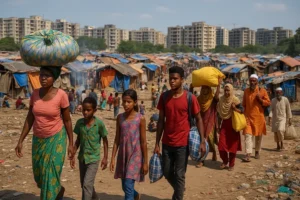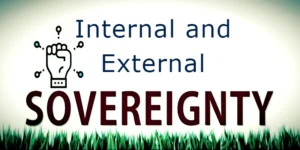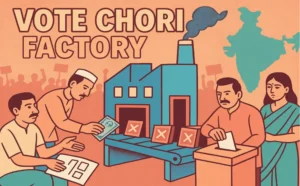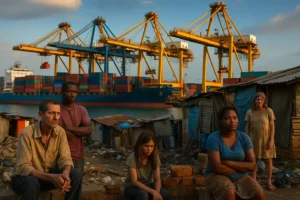The Social and Economic Toll of Caste Based Violence in Rural India
Caste-based violence in rural India is not just about physical attacks—it’s a deep wound that impacts education, jobs, health, and dignity. For many marginalized communities, daily life is shaped by fear, discrimination, and exclusion.
Beyond the visible brutality, the social and economic toll of caste violence keeps families trapped in cycles of poverty and trauma. Villages lose productivity, children lose opportunities, and communities remain divided.
To truly understand rural India’s challenges, we must look beyond statistics and explore how caste-based violence affects lives, futures, and the nation’s growth.
In this article, we will explore the impact of caste based violence in rural India on livelihoods, education, healthcare, and social mobility—and uncover the urgent need for justice, reform, and inclusive development.
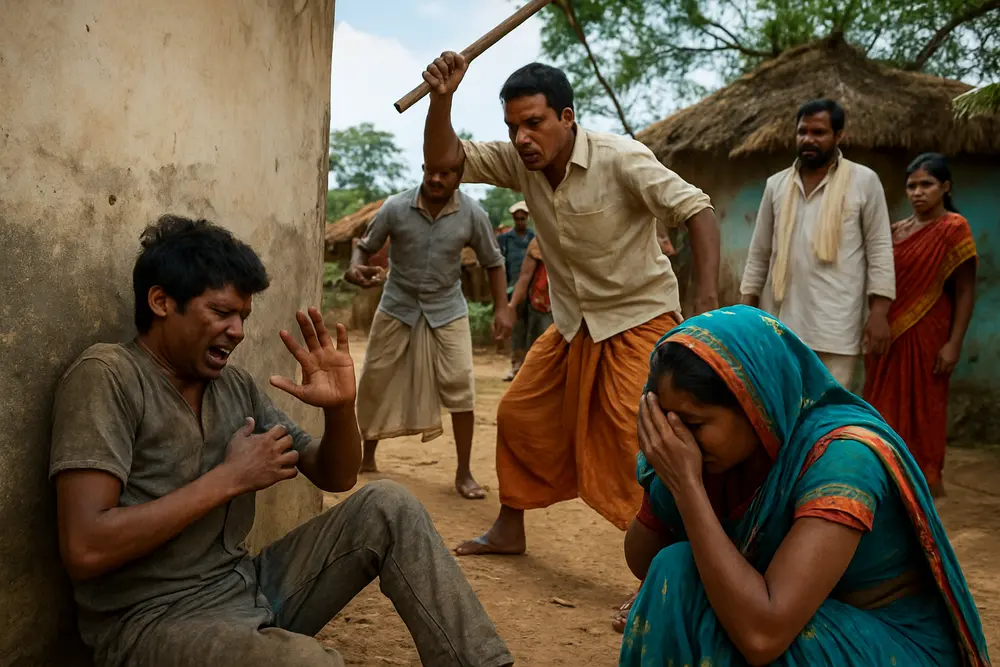
How Does Caste-Based Violence Affect Rural India? Social and Economic Toll Explained
Caste-based violence in rural India extends beyond physical harm—it fuels poverty, blocks education, and deepens social divides. The social and economic toll leaves marginalized communities trapped in cycles of exclusion, limiting rural development and India’s overall growth.
Introduction
India’s caste system, an age-old social hierarchy, remains embedded—especially deep in rural communities. While caste identities date back centuries, their consequences are far from ancient history.
Caste-based violence in rural India includes physical assaults, psychological trauma, social exclusion, and economic deprivation—all underscoring the tragic persistence of casteism.
In villages where generations live with rigid ostracism, these violent acts don’t just hurt individuals—they cripple communities.
Let’s explore this harsh reality with compassion and clarity, weaving in real-life stories, data, studies, and reforms. Let’s journey together—step by step—through how caste-based violence plays out in rural India and why it matters.
Historical Context of Caste and Violence
The caste system in India, rooted in the ancient varna and jati system, imposed untouchability and occupation-based social roles.
Dalits, cast as “impure,” were systematically denied access to resources, social spaces, and dignity.
Colonial-era land arrangements—like the zamindari system—often entrenched caste hierarchies by favoring dominant castes in land control. They wielded authority over Dalits and marginalized communities.
Post-independence, India abolished untouchability (Constitution, Article 17) and passed laws like the Protection of Civil Rights Act and the SC/ST (Prevention of Atrocities) Act. Yet, transformation in rural caste power structures has been slow.
Long-contested land rights, entrenched social norms, and weak law enforcement drained much of the promise of these reforms.
Present Scenario in Rural India
Caste-based violence in rural India remains deeply troubling, marked by systemic discrimination, social exclusion, and frequent atrocities against marginalized communities—especially Dalits and Adivasis.
Between January and June 2025 alone, over 113 caste atrocities were recorded across India, with Uttar Pradesh, Madhya Pradesh, and Tamil Nadu among the worst-affected states.
Dalits continue to face segregation in workplaces, tea stalls, temples, and even access to water. Many are forced into degrading, unpaid labor and denied basic dignity.
Studies like the Muzaffarnagar riots case analysis highlight how political interference and media bias perpetuate violence and silence accountability.
Social activists report that caste-based exploitation is often normalized, with survivors discouraged from seeking justice due to threats and dependency on dominant caste groups.
One headline from just a few days ago: a 58-year-old Dalit skinner in Gujarat was stabbed and beaten by vigilante youths while skinning a dead cow. Casteist slurs were used, and SC/ST Act sections were invoked in the case.
In Bihar, superstition—often weaponized against marginalized women accused of being “witches”—has led to violence, exile, and deep psychological trauma. Even decades-old laws like the Prevention of Witch Practices Act are poorly enforced.
Nationwide, according to 2022 data, 57,582 crimes were registered against Scheduled Castes, a 13.1% increase from the previous year.
Uttar Pradesh alone accounted for 15,368 of those cases—roughly 28% of the national total. Rajasthan, Madhya Pradesh, and Bihar also featured among the highest states for caste-based crimes.
Types of offenses frequently reported include:
- Simple hurt (18,428 cases),
- Criminal intimidation (5,274),
- Crimes under the SC/ST (Prevention of Atrocities) Act (4,703).
Experts estimate more than 50,000 caste crimes occur each year, with 13 Dalit women raped each week, and yet no district has been declared “atrocity-prone” for rapid intervention.
Social Impact of Caste-Based Violence in Rural India
Caste-based violence in rural India does not only hurt individuals physically—it leaves deep scars on society as a whole.
One of the biggest impacts is on education. Many Dalit and marginalized children face bullying, discrimination, or even segregation in schools. This pushes students to drop out early, cutting short their dreams and opportunities.
Healthcare is another area where exclusion is visible. There are still reports of Dalits being denied entry into local clinics or being forced to wait longer for treatment. Such practices not only harm health but also reinforce a sense of “lesser worth.”
The psychological toll is equally devastating. Victims live with constant fear, humiliation, and trauma.
Families often suffer in silence, afraid of retaliation if they speak up. Even when they migrate to cities, the stigma of caste often follows them, limiting opportunities for jobs and housing.
Perhaps the most damaging effect is the intergenerational impact. When a community is trapped in cycles of fear, exclusion, and poverty, the scars don’t fade with one generation—they pass down, making it harder for rural India to move forward as a whole.
Economic Impact of Caste-Based Violence in Rural India
Caste-based violence in rural India doesn’t just harm social relationships—it also creates long-lasting economic inequality.
Land is the most valuable resource in villages, but Dalits and marginalized communities often own very little.
In many cases, powerful castes seize their land or prevent them from accessing common resources like wells, grazing fields, or markets. This keeps families trapped in cycles of poverty.
Employment opportunities are also deeply affected. Many Dalits are pushed into low-paying, exploitative jobs or even bonded labor.
Wage discrimination is still reported in several states, where workers from marginalized groups are paid less for the same work. In addition, fear of violence or boycott discourages victims from asserting their rights or demanding fair treatment.
The cycle doesn’t stop there. Families denied land and fair wages often migrate to cities in search of work, only to end up in urban slums with little security. This migration further weakens rural communities by removing their labor force.
Ultimately, caste-based violence reduces productivity, limits access to resources, and holds back entire villages from economic growth. Breaking this cycle is essential for building a fair and prosperous rural India.
Read Here: How Caste Discrimination Limits Job Opportunities in India
Case Studies
- Khairlanji Massacre (2006, Maharashtra): Four members of a Dalit family were paraded naked, hanged, and murdered after a land dispute. Allegations of police collusion and corruption marred the investigation.
- Una Flogging (2016, Gujarat): Dalit skinning workers were tied, stripped, and beaten publicly by cow vigilantes, captured on video, and igniting widespread protests. Promised government aid—including land and jobs—never materialized.
- Mirchpur Violence (2010, Haryana): Upper-caste Jats torched Dalit houses, killing two—including a disabled teenager—and displacing hundreds. Convictions came years later.
- Laxmipeta Massacre (2012, Andhra Pradesh): Kapu caste members attacked a Dalit colony, killing five and injuring many using axes and bombs.
- Belchhi Massacre (1977, Bihar): A mob murdered and burned alive eleven Dalits and backward-caste victims. Later convictions and brutal justice marked a rare legal milestone.
These incidents highlight how caste-based violence can erupt over land, assertiveness, or minor disputes, and the justice system often responds too late or insufficiently.
Role of Social Movements and NGOs in Combating Caste-Based Violence in Rural India
Social movements and NGOs have played a powerful role in challenging caste-based violence and discrimination in rural India. While laws exist on paper, it is often grassroots activism that ensures victims receive justice and support.
Movements, inspired by Dr. B.R. Ambedkar’s philosophy, have been at the forefront, encouraging Dalits to assert their rights, demand dignity, and fight back against oppression.
Large-scale mobilizations—like protests after the Una flogging in Gujarat—show how collective voices can push authorities to act and bring national attention to rural atrocities.
NGOs also provide vital services. Many organizations offer legal aid to victims who struggle to file cases under the SC/ST Act, while others run awareness campaigns about constitutional rights and social equality.
Organizations such as the National Campaign on Dalit Human Rights (NCDHR), Dalit Foundation, Navsarjan Trust, and People’s Watch offer legal aid, documentation, advocacy, and rehabilitation for victims of violence.
Some NGOs focus on education, skill training, and rehabilitation for affected families, helping break the cycle of poverty and exclusion.
In recent years, social media campaigns run by activists and NGOs have amplified these struggles. Stories that once remained buried in villages now reach global audiences within hours.
These movements and organizations act as a bridge between marginalized communities and the state, ensuring that caste-based violence is not ignored but actively challenged.
Solutions and the Way Forward to End Caste-Based Violence in Rural India
Addressing caste-based violence in rural India requires more than laws—it needs awareness, education, economic empowerment, and stronger justice delivery. Building equality-driven communities is the key to long-term change and inclusive growth.
Here’s what could help shape a more just rural India:
- Awareness & Education: Promote caste sensitivity through schools and community dialogues. Replace superstition with science-informed outreach.
- Law Enforcement & Accountability: Fast-track atrocity cases, ensure FIRs, and introduce checks for police and judiciary bias.
- Economic Empowerment: Continue land reforms, skill development, and direct support targeting Dalit and Adivasi communities.
- Community Reconciliation: Dialogue initiatives, inter-caste forums, and ceremonies of inclusion can rebuild trust.
- Policy & Welfare Schemes: Scholarships and support programs—like those recently launched in Tamil Nadu—must be sustained.
- Media & Social Attitude: Promote empathy, share real stories, and challenge caste-based norms across platforms.
Read Here: Role of Social Media in Today’s Social Movements
Conclusion
Caste-based violence in rural India is not a relic—it’s a persistent wound that damages education, health, economics, and social cohesion.
India’s Constitution and laws like the SC/ST (Prevention of Atrocities) Act aim to curb caste-based violence, but weak enforcement, low conviction rates, police bias, and political interference remain major challenges in rural areas.
While laws exist, they falter in implementation. But progress is possible—with committed action from chains of power, NGOs, and communities themselves.
Rural India’s future could be brighter if justice, equality, and dignity replace fear, exclusion, and violence. That transformation starts one conversation, one intervention, and one courageous voice at a time.

